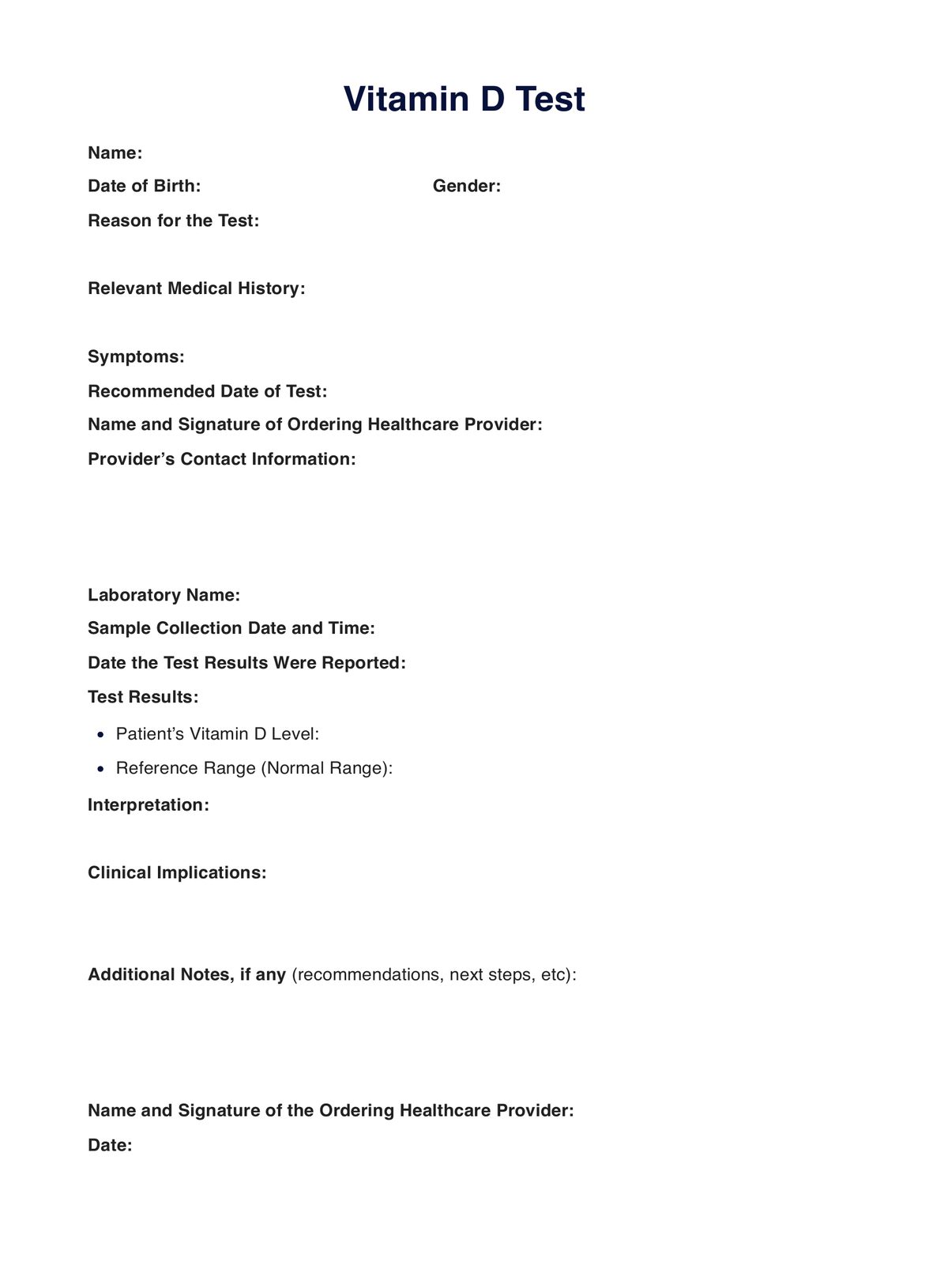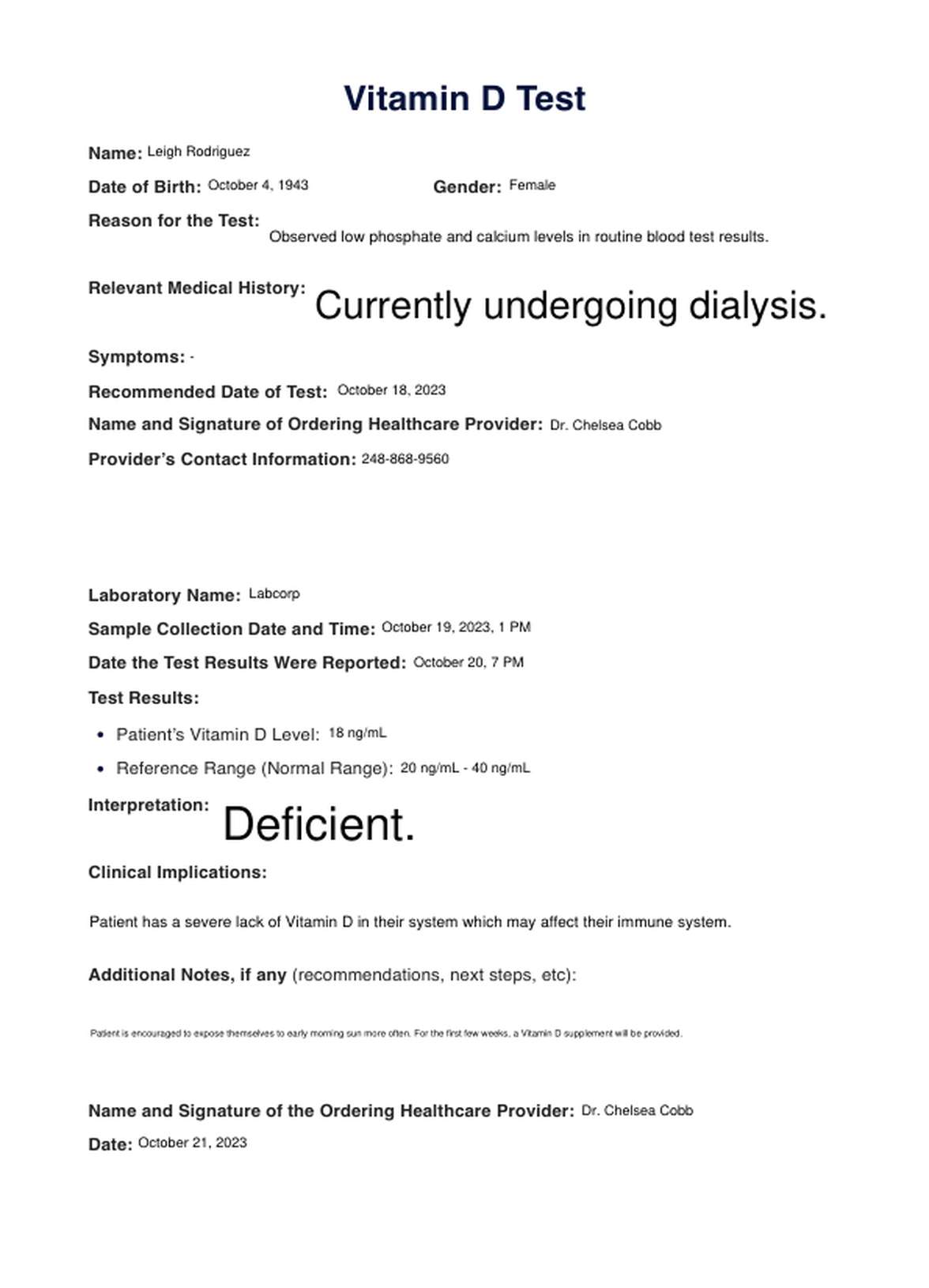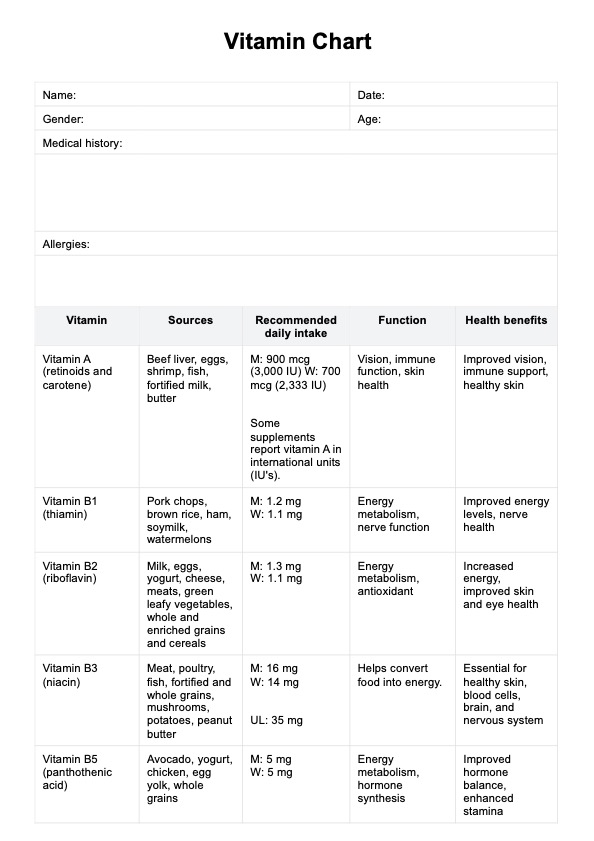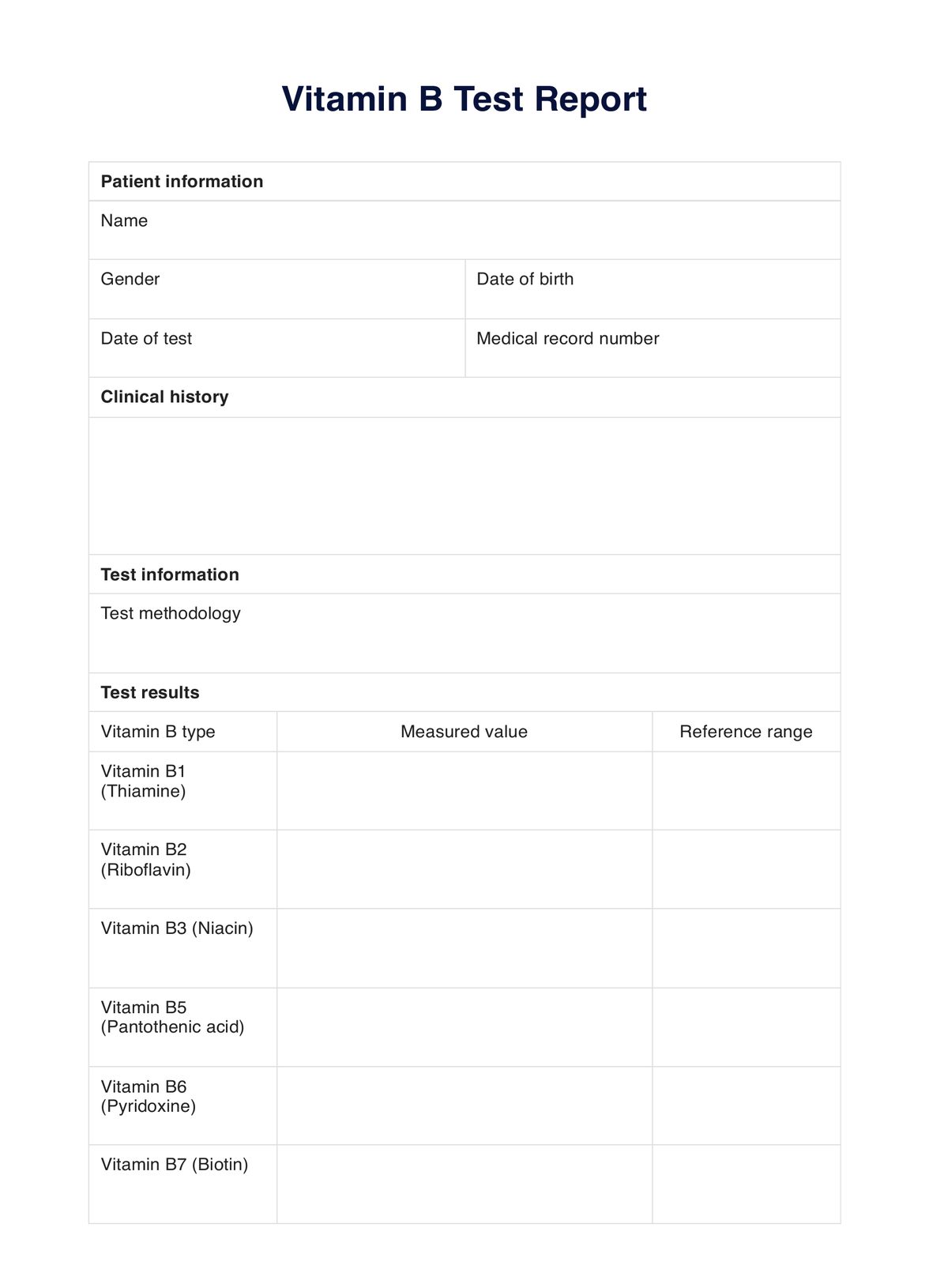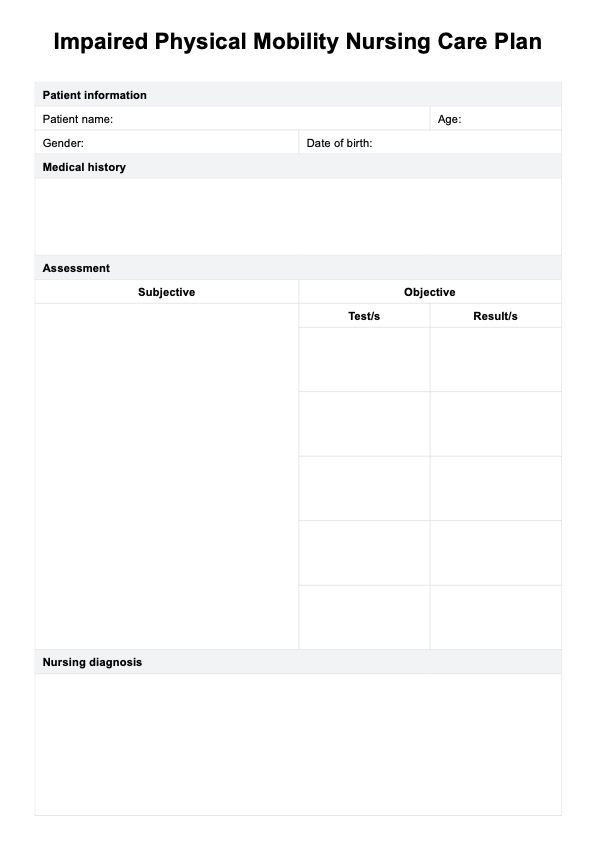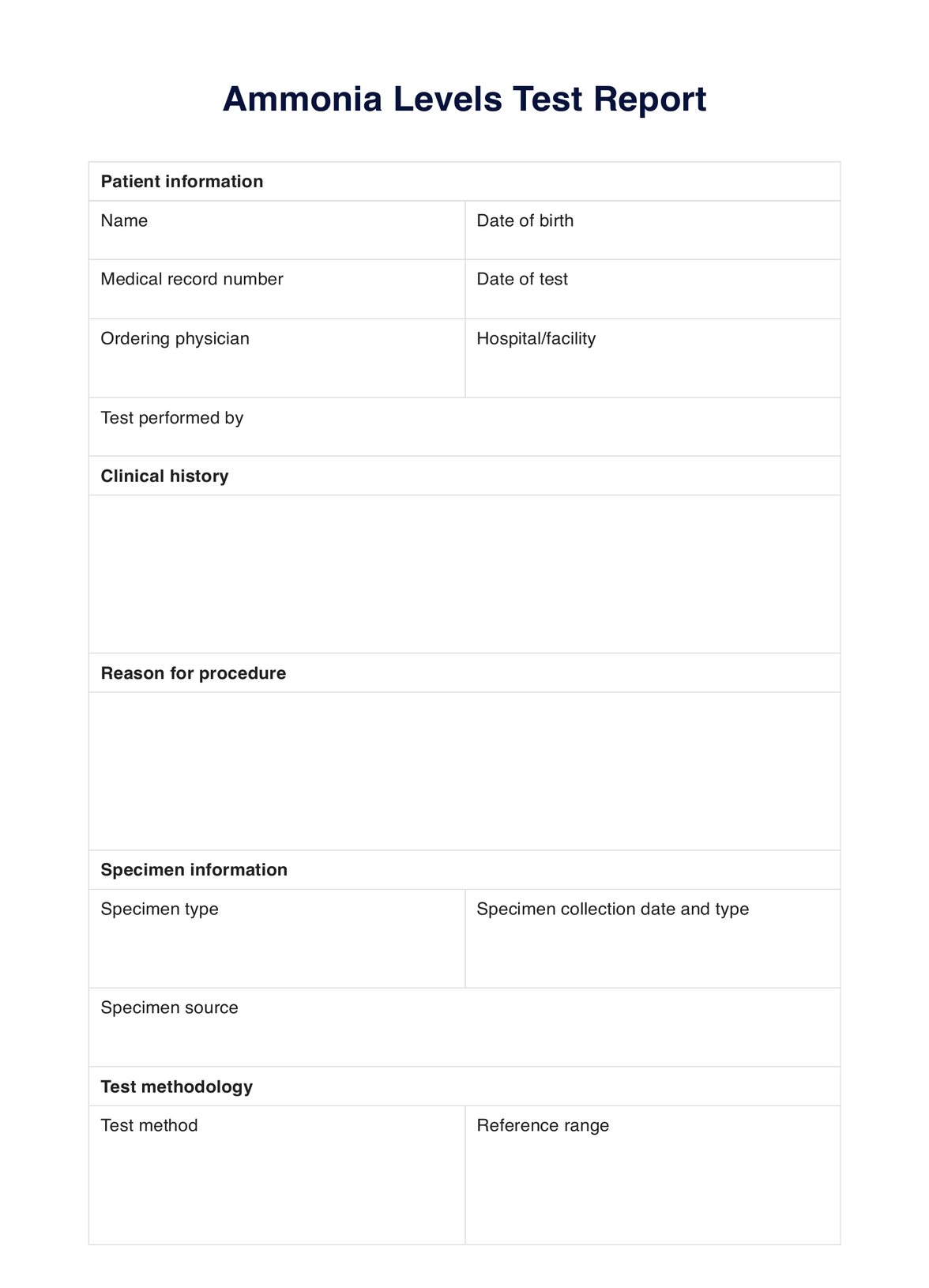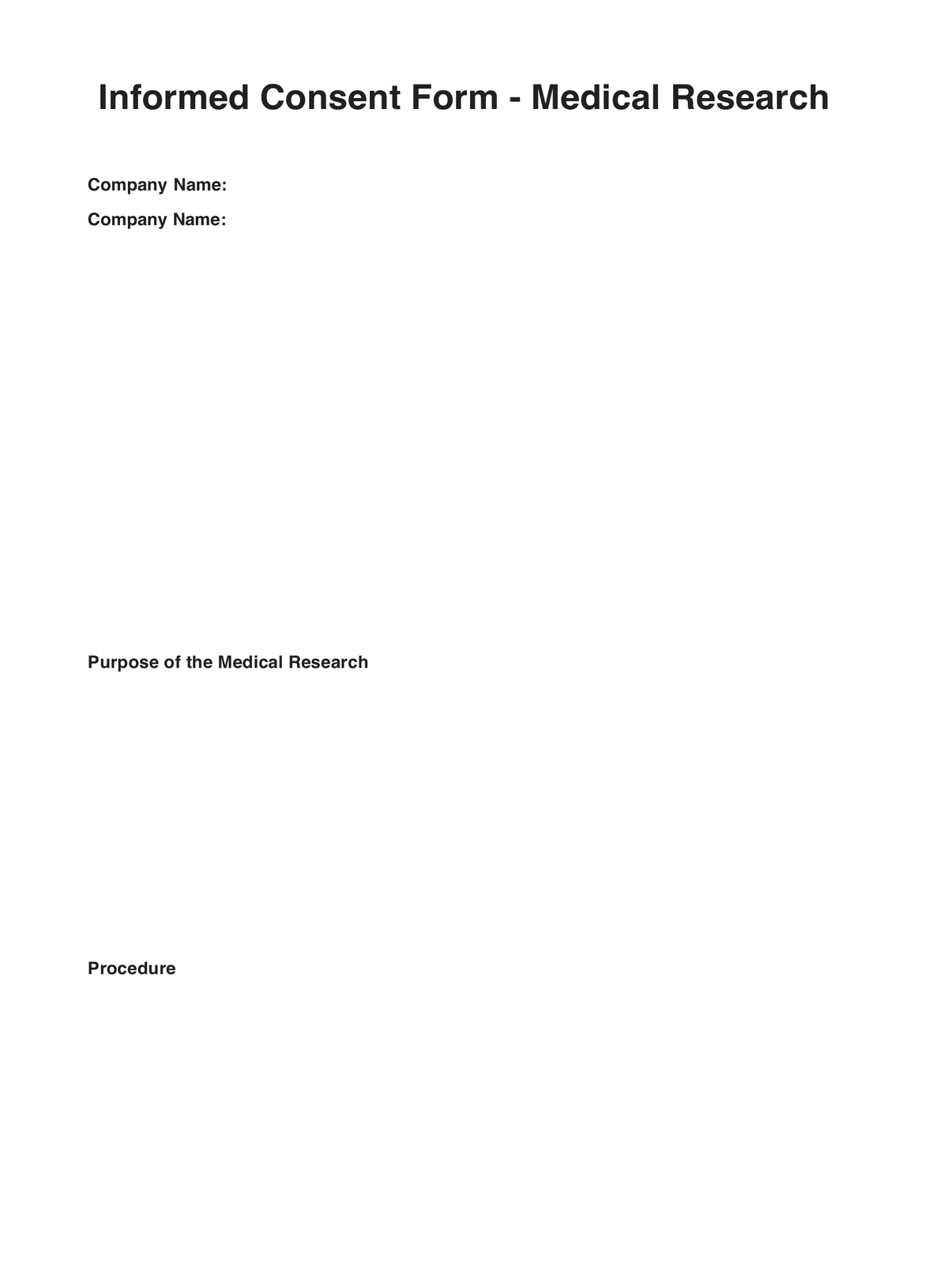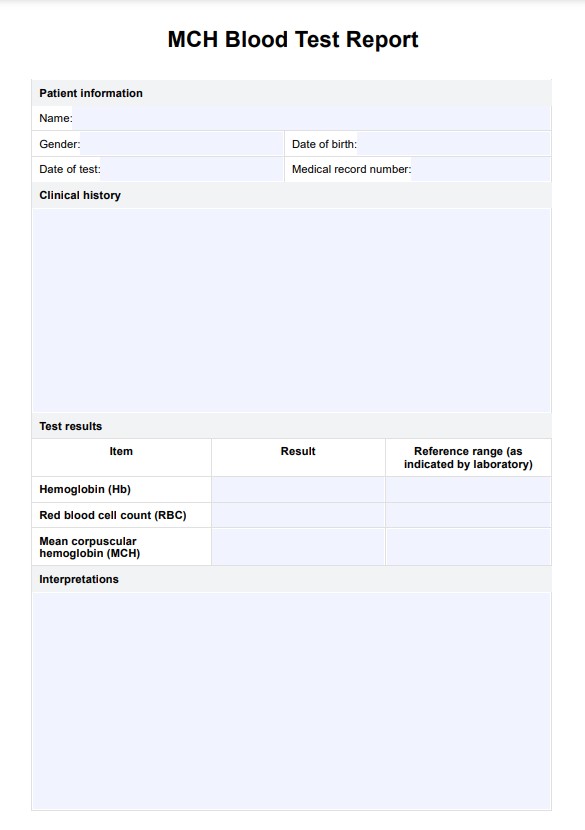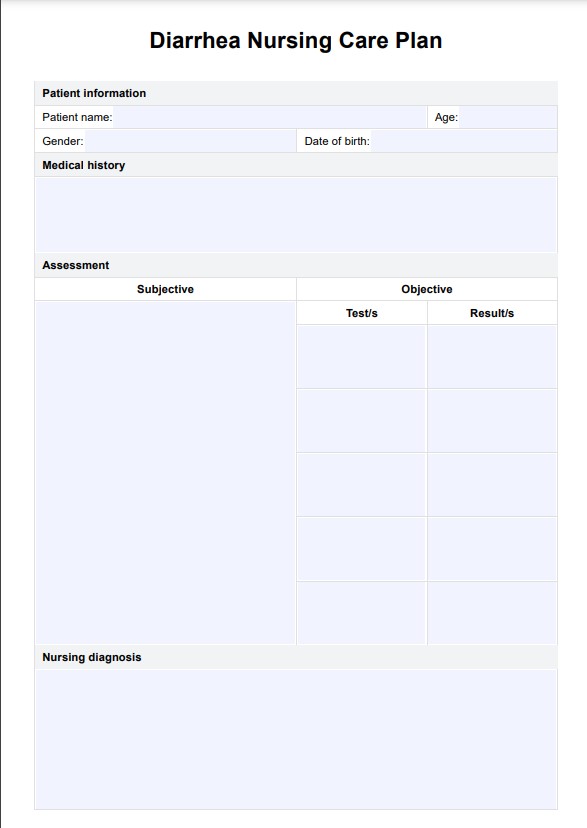Vitamin D Test
Learn more about the importance of the Vitamin D test, its uses, general result interpretations, and more with our short guide.


What is a Vitamin D Test?
The Vitamin D test is a medical test that measures the vitamin D level in one’s blood. It measures t5 (OH)D or 25 hydroxyvitamin D levels.
Said substance is what the liver converts vitamin D into for it to be absorbable and usable by the body to maintain the function and condition of one’s bones, teeth, muscles, nerves, and immune system.
A practitioner often asks for a Vitamin D test if their patient exhibits symptoms of a bone condition or is suspected to have a problem absorbing calcium. If their patient has low vitamin D levels, it may lead to medical issues like bone disorders.
The procedure for the Vitamin D test is pretty straightforward. After a patient fasts for around 4 to 8 hours before the test, the practitioner in charge will collect a blood sample and go to a laboratory for processing. Similar to the procedure, the test results are generally categorized into deficient and adequate levels. Certain practitioners may also label one’s vitamin D levels as high and suboptimal.
One important thing to note is that optimal or normal levels will vary from person to person depending on their age, pre-existing medical conditions, and overall health. The referring physician must always consider said factors for more accurate analysis and interpretation.
Vitamin D Test Template
Vitamin D Test Example
How does it work?
Step One. Access and Download the Template
Have a copy of a digital and printable version of the Vitamin D test when needed by following either of the steps for accessing and downloading the template below:
- Click the “Use Template” or “Download Template” button
- Search for “Vitamin D test” on Carepatron’s template library’s search bar on the website or app
Step Two. Interview, Assess, and Examine the Patient
Depending on your purpose or initial observations, you may interview, assess, or examine your patient to determine if the Vitamin D test is appropriate for the symptoms they’re experiencing or their current condition. If it is, fill out the needed details in the request form section of the template.
Step Three. Collect the Sample
Have your patient or fellow physicians caring for the patient bring the request form to the laboratory when it’s time to collect the blood sample. The document will serve as proof of request; only then will the practitioner in charge collect a sample to analyze.
Step Four. Analyze and Interpret the Results
Once you, the referring physician, have acquired the results, proceed with analysis and interpretation. You may use the document section of our template to record your findings based on their results. Doing so will help you in the long run when you need a guide to refer to during diagnosis or treatment approach formulation.
Step Five. Securely Store the Template
Securely store the template's request and/or document section when you finish filling out it. Physical copies must be securely stored within the establishment for easy retrieval. Digital documents can be stored in Carepatron, HIPAA-compliant, free patient records software, and other relevant patient records.
When would you use this test?
A medical practitioner, specifically a doctor or nurse, can request or use a Vitamin D test in the following situations:
Investigating the Cause of Symptoms and Diagnosing
The referring physician may request a Vitamin D test if the patient exhibits signs and symptoms of bone-related issues caused by a vitamin D deficiency. Some of these are muscle weakness, bone pain, fractures, low bone density, osteoporosis or osteopenia.
It’s also possible that, instead of an interview or a physical exam, the referring physician may request a vitamin D test if the patient has abnormal phosphate, calcium, and/or parathyroid hormone (PTH) levels in their routine blood tests.
Identification and Prevention
Those more prone to vitamin D deficiency because of their lifestyle, condition, etc., may be asked to undergo a vitamin D test to identify any deficiencies early on and prevent the development or worsening of possible associated health problems.
The high-risk groups being described above are the following: breastfed infants, obese individuals, older adults, individuals with limited sun exposure, those who have undergone gastric bypass, those with a nutrient absorption disease, pregnant women, those with darker skin, those who have chronic kidney disease, and those who are taking medication that may affect their body’s capability of absorbing vitamin D.
Monitoring
Suppose the patient has a history of vitamin D deficiency or has been diagnosed with the condition and is undergoing treatment. In that case, the referring physician may have them experience the test to track the effectiveness of their treatment.
What do the results mean?
Even if analysis and interpretation must consider the context of the patient, if you need general guidelines of the test result’s interpretation to write down on your free Vitamin D test template, keep reading below:
- Deficient: If the patient’s vitamin D levels are lower than 20 ng/mL, they are considered deficient, meaning there’s a severe lack of vitamin D in their system. This result means there’s a higher chance that the patient may develop health problems in their bones or immune system.
- Suboptimal: If the patient’s vitamin D levels are between 20 and 29 ng/ml, they are considered suboptimal, which is lower than ideal. In the long run, these levels may cause health concerns similar to those with deficient vitamin D levels.
- Adequate: If a patient has vitamin D levels equal to or greater than 30 ng/mL, they have adequate vitamin D in their body to maintain good bone health, strengthen immune function, regulate mood, and prevent chronic diseases.
- High: If a patient has vitamin D levels equal to or greater than 50 ng/mL, they are considered to have high levels of vitamin D. And though it’s not harmful, there aren’t any additional health benefits one gains from them. Hence, it’s encouraged to maintain levels within the adequate range.
Research & Evidence
The utility and effectiveness have been the subject of ongoing research and debate in the medical community. Depending on the purpose, studies have explored the benefits and necessity of said test. Here are two of them:
Routine Testing
According to some studies, routine testing isn’t required for asymptomatic individuals since there isn’t enough evidence to prove the overall benefits of doing so. Furthermore, the decision-making process is made more complicated because of discrepancies in laboratories of the threshold of the level that should be considered “deficient.”
Health Benefits
According to a review published in the American Family Physician and a report by the U.S. Preventive Services Task Force, there are minimal established health benefits of using the test and insufficient evidence to prove that vitamin D supplements can prevent cancer, fractures, or cardiovascular disease.
However, vitamin D testing is still a tool that healthcare providers can use. Ultimately, it will be their discretion whether the test is appropriate or needed by their patient based on their risk factors and health needs. This, along with keeping updated with available current research, is recommended before requesting. By doing them, a healthcare provider can make better-informed decisions and have a justifiable reason to request a test and possibly provide a Vitamin D supplement.
References
- Harvard Health. (2014, November 26). Vitamin D testing not recommended for most people. https://www.health.harvard.edu/blog/vitamin-d-testing-recommended-people-201411267547
- LD, M. W. R. (2023, January 5). What are the health benefits of vitamin D? https://www.medicalnewstoday.com/articles/161618
- Lin, K. W. (2018, February 15). Vitamin D screening and supplementation in primary care: Time to curb our enthusiasm. AAFP. https://www.aafp.org/pubs/afp/issues/2018/0215/p226.html
- McChesney, C., Singer, A., Duquette, D., Forouhi, N. G., & Levinson, W. (2022). Do not routinely test for vitamin D. BMJ, e070270. https://doi.org/10.1136/bmj-2022-070270
Commonly asked questions
General practitioners and nurses typically request a Vitamin D test.
They are commonly requested and used when the referring physician suspects that the patient has a Vitamin D deficiency based on their history or symptoms and when monitoring the effectiveness of a treatment.
Collecting a sample for the Vitamin D Test will only take a few minutes. However, processing the sample can take several hours to days, depending on the laboratory.


